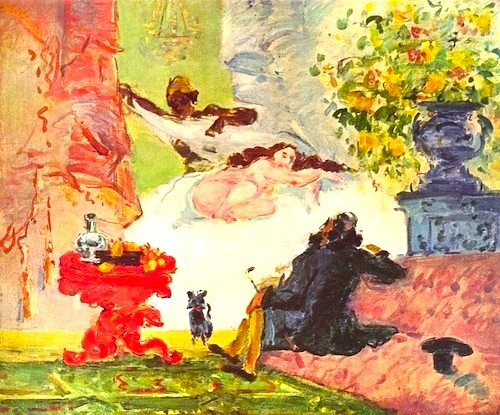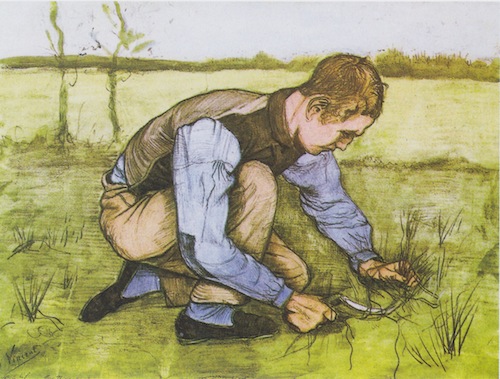I have always been impressed with how awful a painter Paul Cézanne was when he was young. The fact that he started out so dreadful allowed him to be who he became. Without the facility to plausibly adopt the conventions of the Academy or recent innovations of the Impressionists Cézanne had to go his own way. No group could long tolerate him or his work, and temperamentally cranky and solitary, he couldn't stay long with one. His friend and champion Emile Bernard said that Cézanne "submerged his painting in ignorance and his mind in shadows." His detractors said worse.

Paul Cézanne, A Modern Olympia, c. 1873-1874, Oil on canvas, 46 x 55.5 cm -- Musee d'Orsay, Paris
Cézanne's early work was the product of his overwrought and feverish imagination and repressed sexuality. His later achievement was to make painting from observation an active discovery, as energetic and excited as anything by Van Gogh, unified by the rigor and relentlessness of his perception. Observation became a monumental act, and in seeing and translating the world, he simplified and defined the elements of painting, creating a language for 20th C modernism."The day is coming when a single carrot, freshly observed, will set off a revolution," Cézanne promised.
Vincent Van Gogh had similar clumsy and inauspicious beginnings as an artist. After trying and failing as an art dealer and then a minister, he decided that he was a painter. The excess of earnestness which at one point made his paintings look naive and crude would, within a few years, transform to an ecstatic and vivid sensitivity art had never before revealed (the overwrought and feverish thing worked pretty well for Van Gogh).

Vincent Van Gogh, Crouching boy with sickle, October 1881, Black chalk and watercolor, 47 x 61 cm -- Kröller-Müller Museum
Pablo Picasso was that rare (and debatable) phenomenon, a precocious child prodigy in visual art. Throughout his promiscuous (in every way) career, Picasso's constant challenge to himself was to intentionally subvert his own facility (I am reminded of dialogue from The Maltese Falcon -- Joel Cairo (Peter Lorre): You always have a very smooth explanation ready, huh? Sam Spade (Humphrey Bogart): What do you want me to do, learn to stutter?). Picasso envied Cézanne's inability to revert to the tropes and conventions of academic visual representation. Picasso didn't want to look like he knew what he was doing; Cézanne had accepted no ready solution, and engaged in a long search for visual order. Picasso would take Cézanne's achievements for his own -- Cézanne offered Picasso escape from the prodigious but unearned skill he was born with.
You would never call the young Cézanne or Van Gogh talented; but they were gifted with the compulsion to create art from the uncertainty of seeing the world anew.